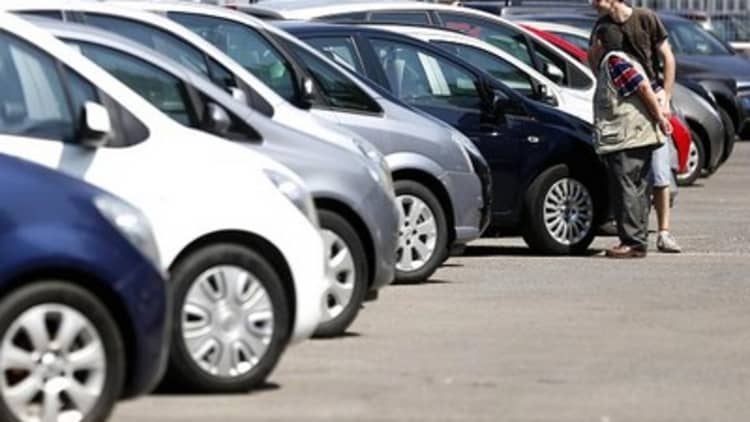Remember the first used car you bought?
I do.
$500 and a case of beer were enough to get my hands on an old Honda Civic a friend in Springfield, Missouri was selling.
Was it a beauty? No.
Was the price right? You bet.
Read MoreAuto leases hit high, buyers hunt for low payments
Most of people bought their first used car by scraping together some cash and buying whatever they could afford.
While that's still the case for millions of people, a new study says millions others cannot afford to buy the average used vehicle in their city.
iSeeCars.com analyzed 25 million used cars sold in the 50 largest metropolitan areas in the U.S. and concluded most would leave the average household over-extended.
"The fact is, buying a used car or truck is just not realistic financially for millions of Americans," said iSeeCars.com CEO Phong Ly. "Even though they do it, the numbers show people are not following the ideal standard to determine if they can afford what they are buying."
Ly crunched the numbers for used vehicle sales following the "20/4/10" standard where used car buyers put down 20 percent, take out a loan no longer than four years and spend no more ten percent of their monthly income on a car payment.
Read MoreSubprime trouble? Car buyers struggle with loans
Using that formula, iSeeCars.com found people in some cities like New Orleans will spend 140 percent more than what's ideal over the course of that vehicle's life.
"Low annual household income in some parts of the country is forcing people into car payments that are higher than they'd like, or for a term far longer than ideal, just to make them more affordable," said Ly.
Longer loans are the new norm
The reality for used and new car buyers is that the days of taking out an auto loan and paying it off within 48 months are long gone.
In fact, Experian says the average used car loan monthly payment in the second quarter of this year was $355, with the average loan stretching out over 61 months.
Stretching out payments means car buyers will pay more in financing over the course of their ownership, which is far from ideal.
Read MoreNew debt crisis fear: Subprime auto loans
"This is the reality now for many used car buyers," said Melinda Zabritski with Experian Automotive. "It may not be perfect, but for many people it's how they can afford to buy a car or truck."
Which raises the question, if people are spending more than what is ideal, does it mean they are in over their heads?
"Not necessarily," says Zabritski. "The repossession and delinquency rates are still very low."
New York, Washington, D.C. top affordability
The metro area of New York and Washington, D.C. are the best areas to buy used cars and stay close to the ideal payment plan, according to iSeeCars.com.
In New York, iSeeCars.com says paying for a used vehicle means paying just 14 percent than the ideal financing formula.
Over the life of a households car loans in New Yorkers would spend $3,173 more than finance experts recommend.

In Washington, D.C. buyers would spend just 16 percent more than ideal.
Ly knows some will look at his data and question whether the numbers add up. After all, part of his calculation involved taking the average household income and numbers of vehicles per household, which on average is more than one.
"I understand that every house and buyer is different," said Ly. "Still, the numbers show that as the prices for used cars has risen and people have taken out longer loans they are increasingly facing payments that cost more than what is ideal."
Questions? Comments? BehindTheWheel@cnbc.com.


